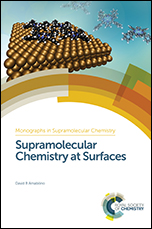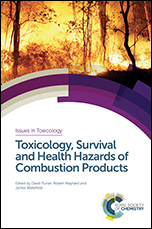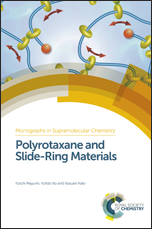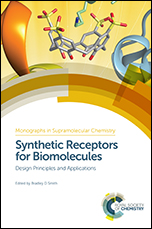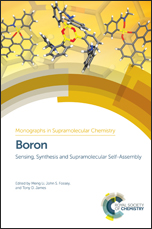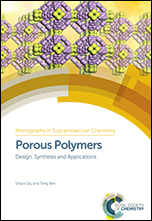A certain Dr Webber had complained to a City of London magistrate that brilliantly coloured socks…had caused severe ‘‘constitutional and local complaint’’ to several of his patients.
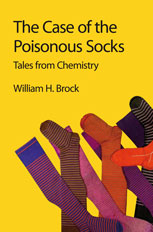
The Case of the Poisonous Socks
William H Brock
£19.99/$32.00
The author says:
“…the idea was to use stories from the history of 19th and 20th-century chemistry to encourage a better understanding of how chemists work and the centrality of chemistry to the working of our modern world.”
*
The reviews say:
“Each essay is itself a mine of glorious nuggets of information … offering the reader such gems as the sock story, an entertaining song about sewerage, and the involvement of the Chemist Justus Liebig with the origins of Fray Bentos corned beef and Oxo.” Georgette Taylor Metascience
“Science historian William H Brock sticks to his scholarship in assembling this collection of 42 short essays, and he tells them in an entertaining manner that facilitates learning and subsequent retelling.” Bob Kenworthy Chemical Heritage, Fall 2012/Winter 2013
*
*
The best cure for muscle and joint pain is ibuprofen, which suppresses the excess arachidonic acid that is the cause.
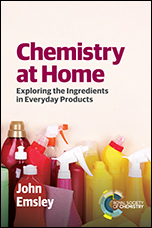
Chemistry at Home
John Emsley
£21.99/$35.00
The author says:
“…if you’ve ever wondered what’s in popular medicines, laundry liquids, cosmetics, toilet cleaners, diet drinks, weedkillers, and even WD40, then this book reveals all. [It] helps people understand what they are using, and to pierce the web of chemistry misinformation that’s spun by some in the media.”
*
*
Chemistry was unquestionably the sine qua non of the war.

The Chemists’ War
Michael Freemantle
£19.99/$32.00
The author says:
“The First World War and especially the chemistry that underpinned the war fascinate me. The lethal explosives, incendiaries, and poison gases used in the war were all discovered and developed by chemists, but so were the anaesthetics, antiseptics, painkillers and disinfectants employed in the casualty clearing stations and military hospitals. I wanted to write a book that covered all the chemical aspects of the war and described the contributions of chemists to the war effort and the care of the sick and wounded.”
The reviews say:
“It is well written, extensively referenced and includes a useful last chapter on the top 50 chemicals of the Great War. There is a lot of interesting chemistry but the human story is also strong.”
“…a remarkably diverse collection of essays … The book will appeal to the general reader as well as the many scientists and historians interested in the Great War.” Popular Science
*
While Herschel may have believed that there was indeed a true absence of stars in such regions, an alternative explanation is simpler: that something in the foreground is obscuring the optical light of the background stars.
 The Cosmic-Chemical Bond
The Cosmic-Chemical Bond
D A Williams, T W Hartquist
£24.99/$40.00
The authors say:
“Chemistry has been operating in the universe ever since the first simple elements appeared after the Big Bang. We describe the chemical story of the universe, from the formation of the first stars and galaxies, to the birth of stars and galaxies in the present epoch. If that’s your bag, this is your book.”
*
*
Markov was unaware that beneath the skin of his leg was a minute pellet containing one of the deadliest of all poisons…
 Molecules of Murder
Molecules of Murder
John Emsley
£16.99/$24.95
The author says:
“The book is about 10 deadly molecules and the murders in which they were used. My reason for writing the book was to tap into the public’s appetite for true crime dramas and to show how important is the role of chemistry.”
*
The reviews say:
“This book is clearly written and much easier to digest than the compounds it describes … Emsley has written a book that satisfies the true-crime reader as well as the science-orientated specialist … I’m sure Gil Grisson, former head of the forensic investigation team in the TV Show “CSI” would have a copy on his shelf.” Charles Tumosa Chemical and Engineering News, Feb 2 2009, Volume 87, Number 05
“…each chapter is full of interesting nuggets of information that you just don’t find in the standard toxicology textbooks … Highly recommended, too, for anybody who enjoys a good thriller!” Safety and Health Practitioner
*
…the innovation of the whisky blend, attributed to Andrew Usher in the early 1860s, was ripe for exploitation by the so-called whisky barons towards the end of the 19th century.
 The Science and Commerce of Whisky
The Science and Commerce of Whisky
Ian Buxton, Paul S Hughes
£27.99/$45.00
The authors say:
“We recognised a need for a fresh and up-to-date approach to a fast-moving topic that would appeal to both students and enthusiasts. Gain insights into and appreciation of one of the world’s favourite spirits.”
*
*
The reviews say:
“The authors have clearly put much effort into this book… I enjoyed the book almost as much as I enjoy whisky. I imagine it will also be enjoyed by many chemists with no taste for whisky. Fascinating stuff from cover to cover.” Ian W Davies Chromatographia (2014) 77:1733-1734
“The entire journey between barley and the final product is explained with a host of scientific details.” Jean-Marie Putz http://www.whisky-distilleries.info
Find all of these and more in the Bookshop now.
![]()


